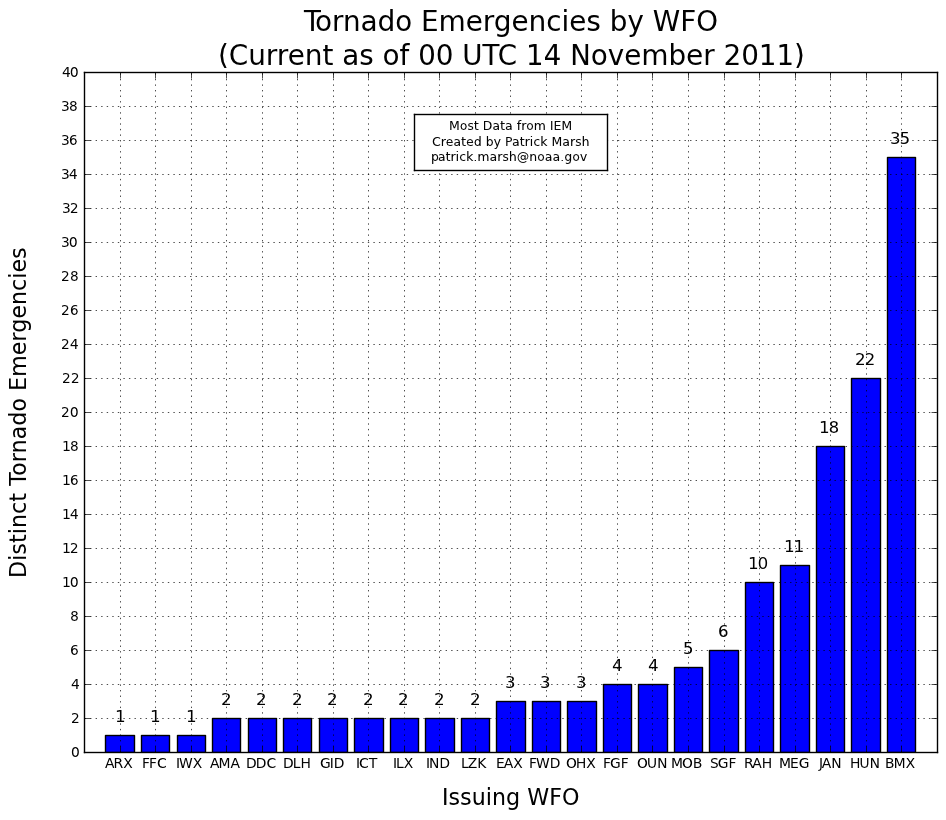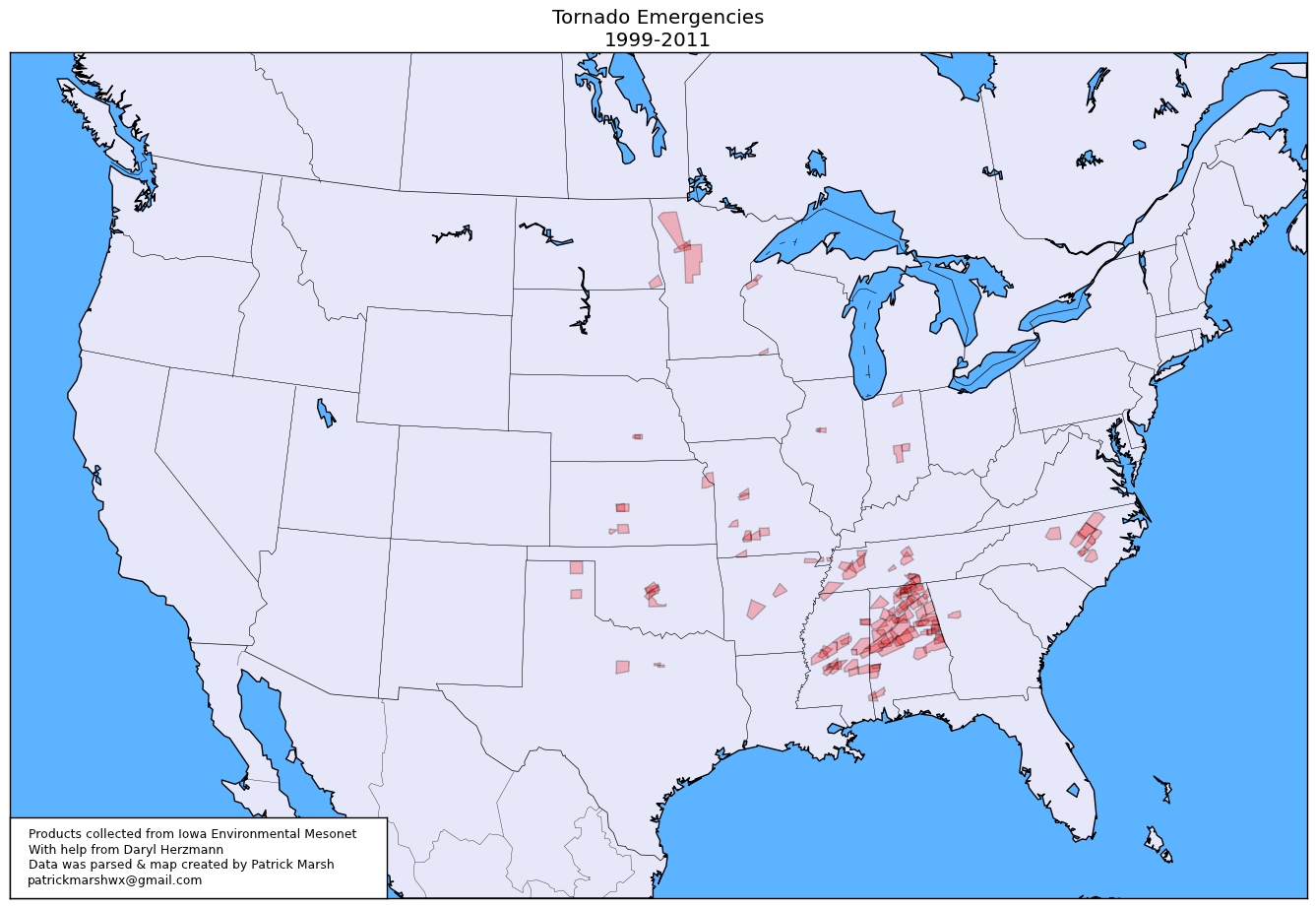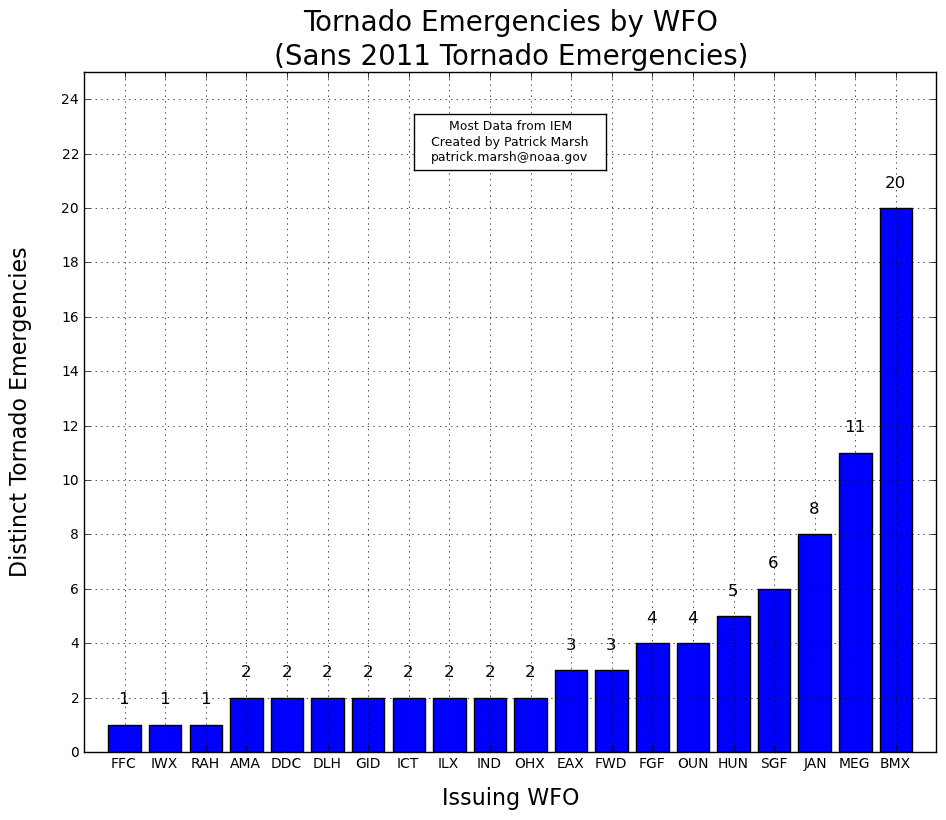Last night I posted a call for help from fellow meteorologists and weather nerds to help me acquire the tornado emergencies that I was missing. Wow! Thanks to the help of Jason Kaiser, Daryl Herzmann from Iowa State, and Rick Smith from National Weather Service (NWS) forecast office Norman, I now believe I have all tornado emergencies in my possession! Now the fun part of analyzing them begins! Since many people are already aware of my project, I decided to go ahead and post two quick graphics that I think will be of interest.
First, a bit about my method. For this analysis I treat the tornado warning and all subsequent severe weather statements associated with the tornado warning as a single episode. Since a tornado emergency can be issued in the text of either a tornado warning or a severe weather statement, all tornado emergencies issued within a single episode is consider a single tornado emergency. Consider the following scenarios:
Scenario 1: A tornado warning is issued for 2 counties and does not contain the tornado emergency text. Subsequently 4 severe weather statements are issued. The second severe weather statement contains the tornado emergency language for county A but not county B. The fourth severe weather statement contains the tornado emergency for county B but not county A. How many tornado emergencies will this count as?
Using my definition, even though 2 tornado emergencies were technically issued, they are both contained within a single tornado warning and thus this is treated as a single tornado emergency.
Scenario 2: A tornado warning is issued for county A and does not contain the tornado emergency text. Subsequently 2 severe weather statements are issued. The second severe weather statement contains the tornado emergency language for county A. As the tornado moves into county B, the NWS issues a new tornado warning, without the tornado emergency language, for county B. Subsequently, the NWS issues three severe weather statements for county B, all three containing the tornado emergency language. How many tornado emergencies will this count as?
Using my definition, even though 4 tornado emergencies were technically issued, they are all contained within the framework of only two tornado warnings. Thus this is treated as two tornado emergencies — even though this is for the same tornado.
Scenario 3: A tornado warning is issued for county A and does contain the tornado emergency text. Subsequently 2 severe weather statements are issued, both of which contain the tornado emergency language. How many tornado emergencies will this count as?
Using my definition, even though 3 tornado emergencies were technically issued, they are all contained within the framework of a single tornado warning. Thus this is treated as one tornado emergency.
Does that make sense?
With that said, there have been 143 distinct tornado emergencies issued since the first one on 3 May 1999 for south Oklahoma City, OK. The chart below breaks them down into yearly counts:

Examining tornado emergencies by NWS forecast office, the top three are
- BMX (Birmingham, AL)
- HUN (Huntsville, AL)
- JAN (Jackson, MS)
This might be a bit surprising to many who typically think of “tornado alley” as being in the central United States. Unfortunately, or fortunately, you decide, many things go into the decision to issue tornado emergencies. Some of these things include population potentially impacted and local office policies. Remember, the tornado emergency is not a formal product. It wasn’t until the last year or two that local forecast offices has official guidance in place. Bottom line, not every office uses tornado emergencies. (Also, keep in mind the magnitude of the 27 April 2011 tornado outbreak and where that was located! However, to be fair, I will say that all of the top three offices had issued tornado emergencies prior to 27 April 2011.)
The rest can be found in the chart below:

In the coming days and weeks I will be doing more analysis on tornado emergencies and will post findings as they are completed. If there is something you would like to see, leave me a comment and let me know. If I don’t already have plans to examine your request, I’ll add it to my list!




